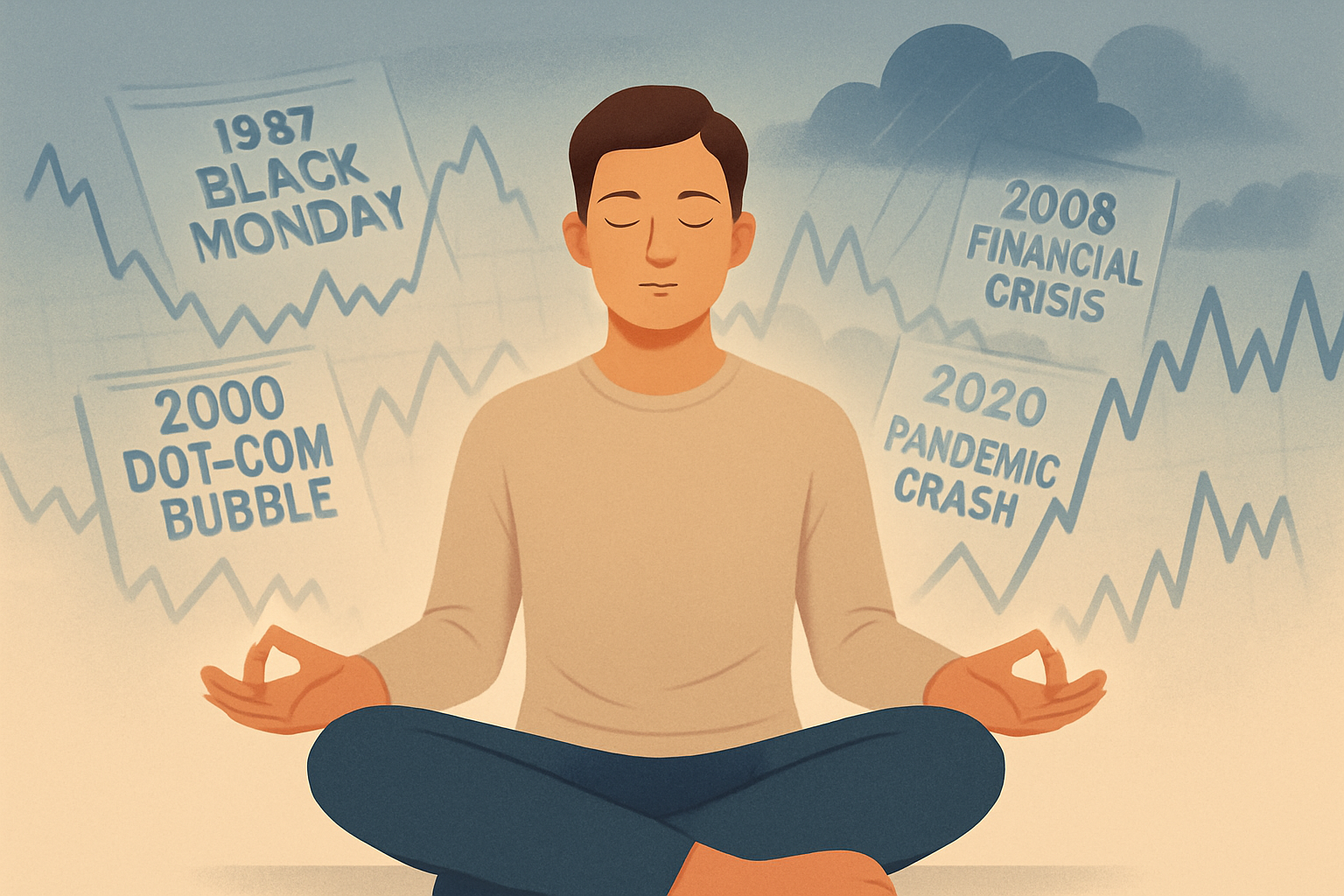Investing often feels like chasing a moving target. From meme stocks to cryptocurrency surges,...
Why Staying Calm Pays Off: The Power of Long-Term, Unemotional Investing
If you've ever felt a rush of excitement during a market rally, or a wave of panic during a downturn, you’re not alone. Emotional investing is one of the biggest pitfalls investors face, and it's often the silent wrecker of long-term success.
In this post, we’ll explore why emotional reactions are so tempting yet destructive, how patient strategies consistently outperform short-term impulses, and practical ways to stay grounded amid the market’s noise.
The Problem with Emotional and Short-Term Investing
Why our brains aren’t wired for investing success
Human psychology often works against us in the markets. Cognitive biases such as loss aversion and overconfidence push investors to react emotionally instead of rationally. In stressful situations, our instincts can drive poor investment decisions, including:
- FOMO (Fear of Missing Out): Buying into hype because “everyone else is doing it” often right before prices fall.
- Herd mentality: Following the crowd amplifies bubbles on the way up and panic-driven sell-offs on the way down.
- Panic selling: Dumping assets during downturns locks in losses and leaves investors sidelined when markets recover.
- Comparing returns: Constantly checking how your portfolio stacks up against others can erode confidence and lead to knee-jerk decisions.
Why Long-Term Thinking Wins
Patience isn’t just a virtue, it’s a strategy
The key “skill” is not predicting the market, but staying invested long enough to let compounding work. Here’s why long-term investing works:
- Compounding accelerates growth
- Volatility smooths over decades
- Consistency beats timing

Staying Unemotional: What It Looks Like in Practice
Warren Buffett (arguably the world’s greatest value investor) and Charlie Munger (his wise partner in rational thinking) built their fortunes not through complex models, but by staying disciplined. They avoided chasing fads, invested in businesses they understood, and let time compound returns. Their careers prove that consistency and emotional restraint often outperform complexity.
That same principle applies to everyday investors. Three proven practices stand out:
- Portfolio rebalancing: More than maintenance, rebalancing systematically sells high and buys low, helping investors resist the urge to chase recent winners.
- Dollar-cost averaging (DCA): By investing at regular intervals, DCA removes the pressure of market timing and builds emotional resilience by creating a consistent routine, helping you stay invested through both bull and bear markets. Read more about Dollar-cost averaging here.
- Staying the course during downturns: Research from the CFA Institute shows that investors who maintain their strategy in volatile periods recover faster and achieve stronger long-term results.
How to Cultivate a Long-Term, Rational Mindset
Emotional investing can be tamed, and even avoided, with a few intentional strategies that help reframe how you approach risk, reward, and decision-making:
- Set clear goals and timelines
Define your "why", whether it’s retirement, a child’s education, or financial independence. Knowing if you’re investing for 5 years or 25 helps put short-term swings into perspective. - Automate your contributions
Automation turns intention into consistency. Regular transfers to your investment account keep your plan on track and remove emotion from the process, regardless of market headlines. - Limit portfolio check-ins
Constant monitoring fuels stress and short-term thinking. Instead, review quarterly or semi-annually to evaluate performance, rebalance, and realign with your goals. - Revisit your investment beliefs during downturns
Market declines test discipline. Use them as reminders that volatility is normal, corrections are temporary, and your long-term strategy is built to withstand turbulence.
The Real Cost of Emotional Investing - and Why Staying Invested Matters
We conducted a case study using rolling annualized returns of the S&P/TSX Total Return Composite from 1980 to 2024 to test a simple question: does time really tilt the odds in favour of disciplined investors? The results are clear: while one-year returns swung violently, longer horizons tell a different story. Over 5 and 10-year periods, outcomes consistently clustered around positive averages, even when those high-volatility events were included.

The lesson is simple: markets carry an upward bias over time. Investors who stay disciplined and unemotional are far more likely to see that bias reflected in their own portfolios.
Evidence-based strategies, systematic rebalancing, and diversified portfolios reduce the temptation to time the market. By embedding discipline into the process, we help clients stay the course - harnessing compounding and letting time transform volatility into stable, lasting returns.
Conclusion
Markets will always rise and fall because that’s their nature. But your reactions don’t have to follow the same swings. By committing to a long-term mindset and keeping emotions in check, you give your investments the best chance to grow.
So ask yourself: are you investing with calm conviction, or reacting to short-term noise? The difference may determine not just your returns, but your peace of mind.





